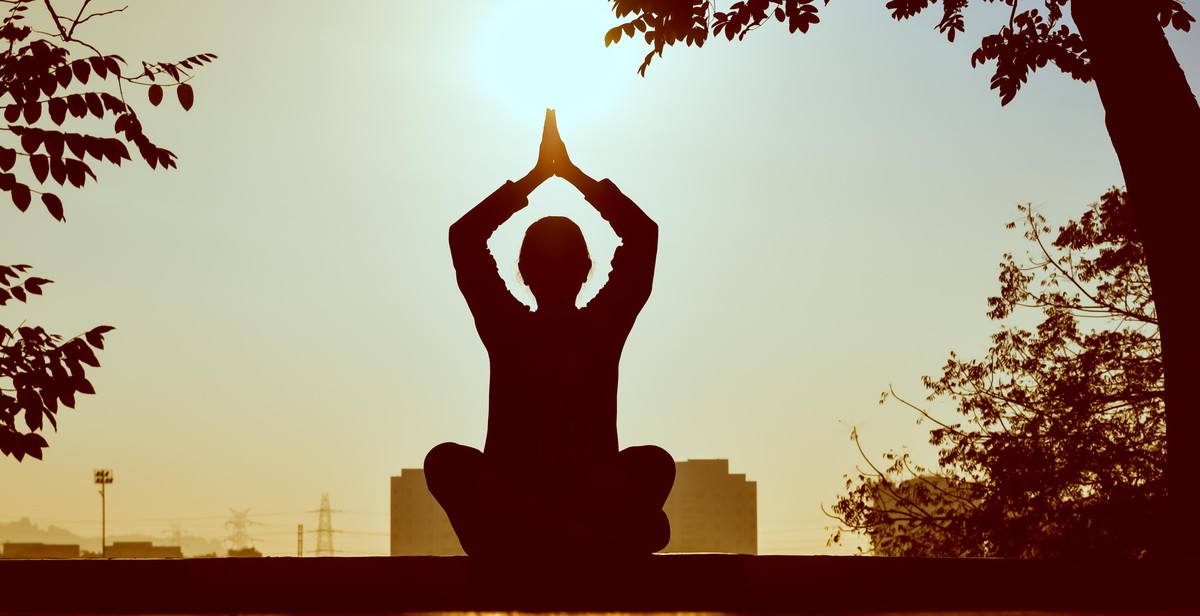Introduction: How to Create a Nighttime Meditation Routine
Meditation is a practice that has been around for centuries and has been proven to have numerous benefits for both the mind and body. One of the best times to meditate is at night, before going to bed. Nighttime meditation can help promote relaxation and inner peace, which can lead to better sleep and a more productive day ahead.
Why Nighttime Meditation is Important
Many people struggle with falling asleep or staying asleep at night due to stress, anxiety, or other factors. This is where nighttime meditation can be beneficial. By taking a few minutes to meditate before bed, you can calm your mind and body, release any tension or stress, and prepare yourself for a restful night’s sleep.
Additionally, nighttime meditation can help you reflect on your day, set intentions for the next day, and cultivate a sense of gratitude and positivity. This can lead to improved overall well-being and a more positive outlook on life.
In this article, we will provide tips and guidance on how to create a nighttime meditation routine that works for you, including techniques and exercises to help you relax and find inner peace.

Preparing for Your Nighttime Meditation Routine
Creating a nighttime meditation routine can be an effective way to promote relaxation and inner peace. To make the most out of your meditation practice, it is important to prepare yourself and your space for a peaceful and calming experience. Here are some tips on how to prepare for your nighttime meditation routine:
Find a Quiet and Comfortable Space
It is important to find a quiet and comfortable space where you can meditate without any distractions. Choose a room or a corner in your home that is free from noise and clutter. Make sure the temperature in the room is comfortable and adjust the lighting to your preference. You can also add some cushions or a meditation mat to make your space more comfortable and inviting.
Set the Mood with Lighting and Scents
Lighting and scents can play a significant role in creating a relaxing atmosphere for your meditation practice. Use soft and warm lighting, such as candles or dimmed lamps, to create a calming ambiance. You can also use essential oils or incense to enhance the mood and promote relaxation. Some popular scents for meditation include lavender, chamomile, and sandalwood.
Choose Your Meditation Technique
There are many different types of meditation techniques to choose from, so it’s important to find the one that works best for you. Some popular techniques include mindfulness meditation, loving-kindness meditation, and body scan meditation. Consider trying different techniques and see which one resonates with you the most. You can also use guided meditations or meditation apps to help you get started.
- Find a quiet and comfortable space
- Set the mood with lighting and scents
- Choose your meditation technique
By following these tips, you can create a peaceful and relaxing nighttime meditation routine that promotes inner peace and well-being.

Beginning Your Meditation Practice
Starting a meditation practice can be intimidating, but it doesn’t have to be. Meditation is simply the practice of calming your mind and focusing your attention. Here are a few tips to get started:
Start with a Few Deep Breaths
Deep breathing is a great way to calm your body and prepare for meditation. Find a comfortable seated position and take a few slow, deep breaths. Inhale deeply through your nose, filling your lungs with air, and exhale slowly through your mouth, releasing any tension in your body. Repeat this a few times until you feel relaxed.
Focus on Relaxing Your Body
Once you’ve taken a few deep breaths, focus on relaxing your body. Starting at the top of your head, scan your body for any tension or tightness. As you exhale, release any tension you find. Move down your body, relaxing each muscle group until you reach your toes.
Clear Your Mind and Focus on Your Breath
As you start to relax your body, you may notice your mind starting to wander. This is normal. When this happens, gently bring your attention back to your breath. Focus on the sensation of your breath moving in and out of your body. You may find it helpful to count each breath, starting at one and counting up to ten, then starting over again.
Remember, meditation is a practice, and it takes time to develop. Don’t worry if your mind wanders or you find it hard to focus at first. With practice, you’ll find it easier to relax and focus your attention.

Deepening Your Meditation Practice
Once you have established a regular nighttime meditation routine, you may want to explore ways to deepen your practice and enhance your relaxation and inner peace. Here are some tips:
Visualize a Peaceful Scene
As you meditate, try visualizing a peaceful scene to help calm your mind and body. This could be a beach, a forest, or any other place that brings you a sense of tranquility. As you visualize this scene, imagine yourself fully immersed in it, feeling the warmth of the sun or the cool breeze on your skin, hearing the sounds of nature around you, and feeling completely at ease. This can help you relax and let go of any stress or tension you may be holding onto.
Use Guided Meditation
If you find it difficult to quiet your mind during meditation, consider using guided meditation. This involves listening to a recorded meditation that takes you through a series of relaxation techniques and visualizations. Guided meditations can be found online or through meditation apps, and can be a helpful tool for beginners or anyone looking to deepen their practice.
Incorporate Mantras or Affirmations
Another way to deepen your meditation practice is to incorporate mantras or affirmations. These are short phrases or words that you repeat to yourself during meditation to help focus your mind and promote inner peace. Some examples of mantras or affirmations include “I am calm and at peace,” “I trust in the universe,” or “I am filled with love and light.” Choose a mantra or affirmation that resonates with you and repeat it silently to yourself as you meditate.
| Tip: | Experiment with different mantras or affirmations to find the one that works best for you. |
|---|
By incorporating these techniques into your nighttime meditation routine, you can deepen your practice and promote even greater relaxation and inner peace.

Ending Your Meditation Practice
As your meditation session comes to a close, it’s important to take a few steps to transition back into your surroundings and daily life. Here are some tips for ending your meditation practice:
Take a Few Deep Breaths
Before you open your eyes and get up, take a few deep breaths. This will help you ease back into your body and bring yourself fully present. You can inhale deeply through your nose and exhale through your mouth, focusing on the sensation of the breath moving in and out of your body.
Gently Return to Your Surroundings
As you open your eyes, take a moment to notice your surroundings. Take in the sights and sounds, and allow yourself to become fully present in the present moment. You might want to stretch your body or move around a bit to help yourself feel grounded.
Reflect on Your Meditation Practice
As you go about your day or evening, take a few moments to reflect on your meditation practice. Notice any changes in your mood, energy levels, or overall sense of well-being. Consider journaling about your experience or sharing it with a friend or loved one.
Remember, meditation is a practice, and it’s okay if your mind wanders or if you don’t feel like you’re “doing it right.” Be gentle with yourself and keep coming back to the breath. Over time, you’ll find that your meditation practice becomes easier and more rewarding.

Conclusion
Creating a nighttime meditation routine can be a powerful tool for promoting relaxation and inner peace. By taking the time to slow down and connect with yourself, you can release stress and tension from the day and prepare your mind and body for a restful night’s sleep.
When developing your own nighttime meditation routine, it’s important to experiment with different techniques and find what works best for you. Whether it’s practicing deep breathing, visualization, or body scan meditations, the key is to make it a consistent habit and prioritize your own self-care.
Additionally, incorporating other relaxation techniques such as aromatherapy, gentle stretching, and journaling can further enhance the benefits of your meditation practice.
Remember, creating a nighttime meditation routine is a personal journey, so be patient and compassionate with yourself as you explore what works best for you. With time and practice, you’ll develop a powerful tool for promoting relaxation and inner peace that you can rely on for years to come.
- Experiment with different meditation techniques to find what works best for you
- Make your meditation practice a consistent habit and prioritize your self-care
- Incorporate other relaxation techniques such as aromatherapy and gentle stretching
- Be patient and compassionate with yourself as you explore your meditation practice
| Benefits of Nighttime Meditation Routine | Techniques to Try |
|---|---|
| Reduces stress and anxiety | Deep breathing |
| Improves sleep quality | Visualization |
| Enhances self-awareness and mindfulness | Body scan meditation |
